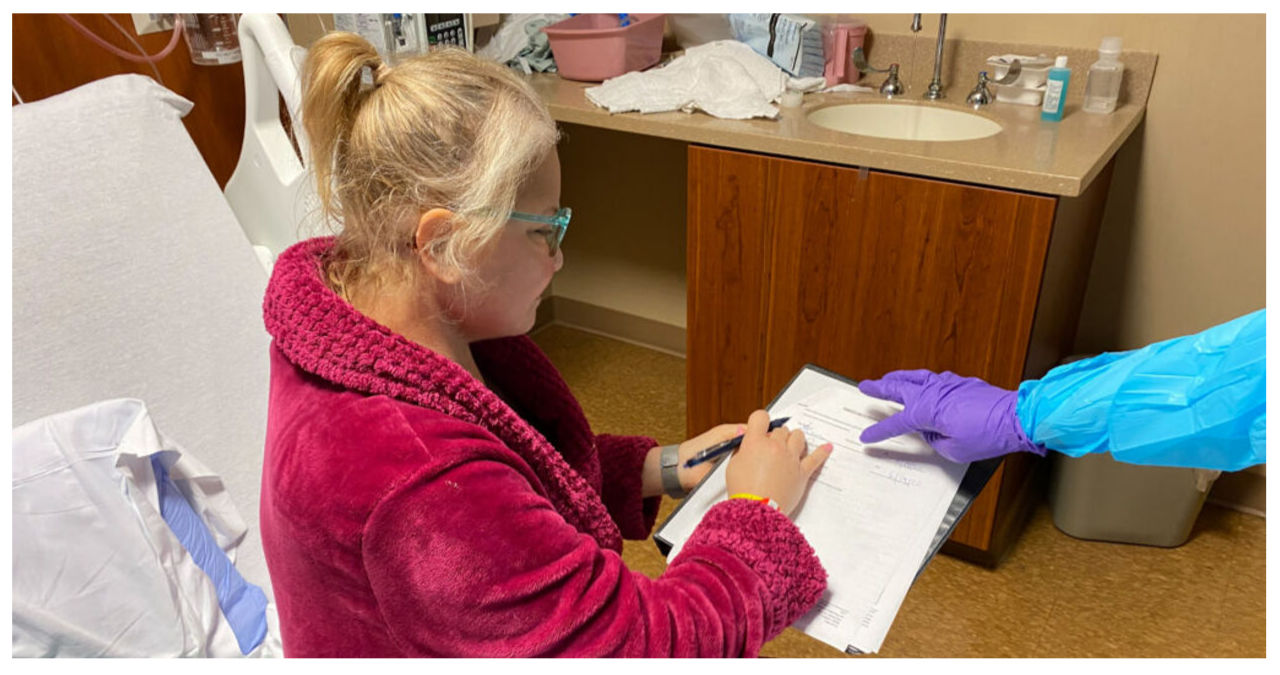Patients recovering from opioid addiction, who require temporary accommodation before returning home, face challenges in securing a bed at a skilled nursing care facility, according to a study conducted by a Brown University researcher (Getty image).
Stigma faced by individuals struggling with opioid addiction can originate from various sources. Surprisingly, a recent study conducted by a researcher from Brown University School of Public Health indicates that nursing homes can also contribute to this stigma.
People who have opioid use disorder may sometimes be admitted to skilled nursing facilities as part of their recovery process after being in the hospital. These specialized facilities are designed to assist patients in preventing hospital readmission and managing complications related to their condition, such as injection site wounds or infections.
According to a study conducted by Patience Moyo, an assistant professor of health services, policy and practice at Brown, it has been discovered that skilled nursing facilities in Rhode Island frequently violate the Americans with Disabilities Act (ADA) by denying admission to patients who have recently been hospitalized for opioid addiction. Despite the fact that residential care is safeguarded under the ADA, these facilities fail to comply with the regulations.
Patience Moyo, an assistant professor of health services, policy, and practice at Brown University, spearheaded a recently published study that delved into the attitudes of nursing home administrators towards individuals with opioid use disorder.
A recent qualitative study, published on February 5 in the journal JAMA Network Open, conducted surveys in Rhode Island’s skilled nursing facilities. The study included 27 facilities, both nonprofit and for-profit, to gather insights into administrator attitudes towards accepting patients with opioid use disorder. The interviews were conducted between November 2021 and April 27, 2022, coinciding with the U.S. Department of Justice’s clarification on opioid use treatment and the ADA.
According to the article, the study was conducted before there was widespread awareness of anti-discrimination protections. This lack of awareness may have allowed administrators to openly express views that they would be more cautious about sharing today.
In this study, a group of 29 individuals was interviewed, comprising administrators, directors of nursing and admission, and one unit manager. As per the standard practice in research involving human subjects, the article has refrained from including any personal details about the participants.
According to one interviewee, their facility did not seem to worry about violating the ADA. They revealed that their facility turned away 110 hospital referrals in a single year due to various reasons such as a patient’s psychiatric history, drug use, suicidality, smoking, or opioid treatment.
During the interviews conducted by Moyo and her team, it was found that refusals were not a common occurrence across all facilities. However, this was one of the key themes that emerged as they sought to understand the perspectives of higher-ups at nursing facilities towards individuals who needed residential treatment for opioid use.
“In certain situations, hospitalizations can involve severe infections, procedures requiring extended recovery periods, or rehabilitation and mobility issues,” Moyo explained during a recent phone interview. “There are instances where individuals may experience a loss of mobility while hospitalized. Therefore, nursing facilities serve as a valuable option for receiving subacute care.”
According to Moyo, the readmission rate for patients discharged for opioid use disorder is usually around 30% within 30 days. However, she also mentioned that only 16% of hospitalized patients end up being transferred to a nursing facility.
One interviewee expressed their approach to reviewing the referral record, stating, “I carefully go through it and eliminate the clear ‘no’s.’ If I notice that the person is on methadone or Suboxone, I immediately dismiss them as potential candidates.”
Methadone and buprenorphine, also known as Suboxone, are commonly used to help individuals overcome opioid addiction. However, according to a study, many nursing facilities face challenges in providing these medications due to the lack of available clinicians who can prescribe them. Recognizing the need for improved accessibility to opioid cessation treatments, U.S. Senator Edward Markey of Massachusetts has proposed a bill in 2023 to address this issue.
Workforce shortage a factor
Transporting patients to methadone clinics posed a logistical challenge for nursing facilities, highlighting the study’s emphasis on staffing shortages.
According to one interviewee, a common issue in nursing homes is the high turnover rate among employees. They stated, “Half the people that work in nursing homes work there for one day and then they go work in a different one. You might train five people that might not ever be here again.” This frequent turnover can lead to a lack of consistency and continuity in care.
There were also concerns about how opioid-using patients could impact the culture of a nursing home. Typically, nursing homes are associated with older individuals and not younger individuals with drug-use disorders. Administrators were worried about potential incidents or violence that could arise from mixing a vulnerable, elderly population with younger or older individuals who use opioids.
One interviewee emphasized that certain social issues could pose more challenges for employees compared to typical skilled nursing patients.
According to Moyo, patients are often enticed by the significantly lower cost of a day in a nursing facility compared to a day in the hospital. However, administrators do not share the same viewpoint. They point out that a large majority of patients admitted for opioid use disorder treatment are covered by Medicaid, which offers less than satisfactory reimbursements for such cases.
Moyo and her team gained a deeper understanding of the intricate challenges involved in the study. Nursing facilities often face issues related to staffing and funding, causing significant strain. When it comes to training staff to provide proper care for patients with unique needs, the response from these facilities can be dismissive, reflecting a larger crisis in skilled nursing facilities.
According to Moyo, finding a simpler solution to address reimbursement issues is not an easy task. The state would need to allocate sufficient funding towards Medicaid in order to tackle this problem. Moyo emphasizes that it is not as simple as increasing the reimbursement rate to make it easier to provide care for these individuals.
According to Moyo, it is suggested that nursing facilities could be given “financial incentives” as a way to encourage them to accept Medicaid patients. Nursing facilities are typically very attentive to their star ratings with the federal Centers for Medicare and Medicaid Services, and refusing Medicaid patients could negatively impact their ratings.
In the words of Moyo, “These ratings serve as a tool for consumers to make informed choices.” She further adds, “Our team believes that it is crucial to calculate these star ratings in a manner that does not unfairly penalize facilities that offer care for individuals with OUD (opioid use disorder).”
Jon Soske, a specialist in addiction medicine at Rhode Island Hospital, introduced the concept of “stigma ambivalence” in the study.
According to the study, some participants expressed mixed feelings by acknowledging that they shouldn’t make generalizations about certain groups, yet still believing that these generalizations were accurate. The study also found that this ambivalence towards stigma made it difficult to differentiate between genuine concerns about institutional capacity and the stereotyping of individuals with opioid use disorder (OUD).
One interviewee showed more empathy as she shared a story about a 29-year-old man residing in her 57-bed facility, which was mostly occupied by elderly women.
According to the interviewee, individuals in this situation feel isolated and lacking understanding from others. This can result in them becoming withdrawn and less sociable, which can be a challenging experience for anyone to endure.
It is not clear whether the interviewee was referring to the young man or the elderly women.



